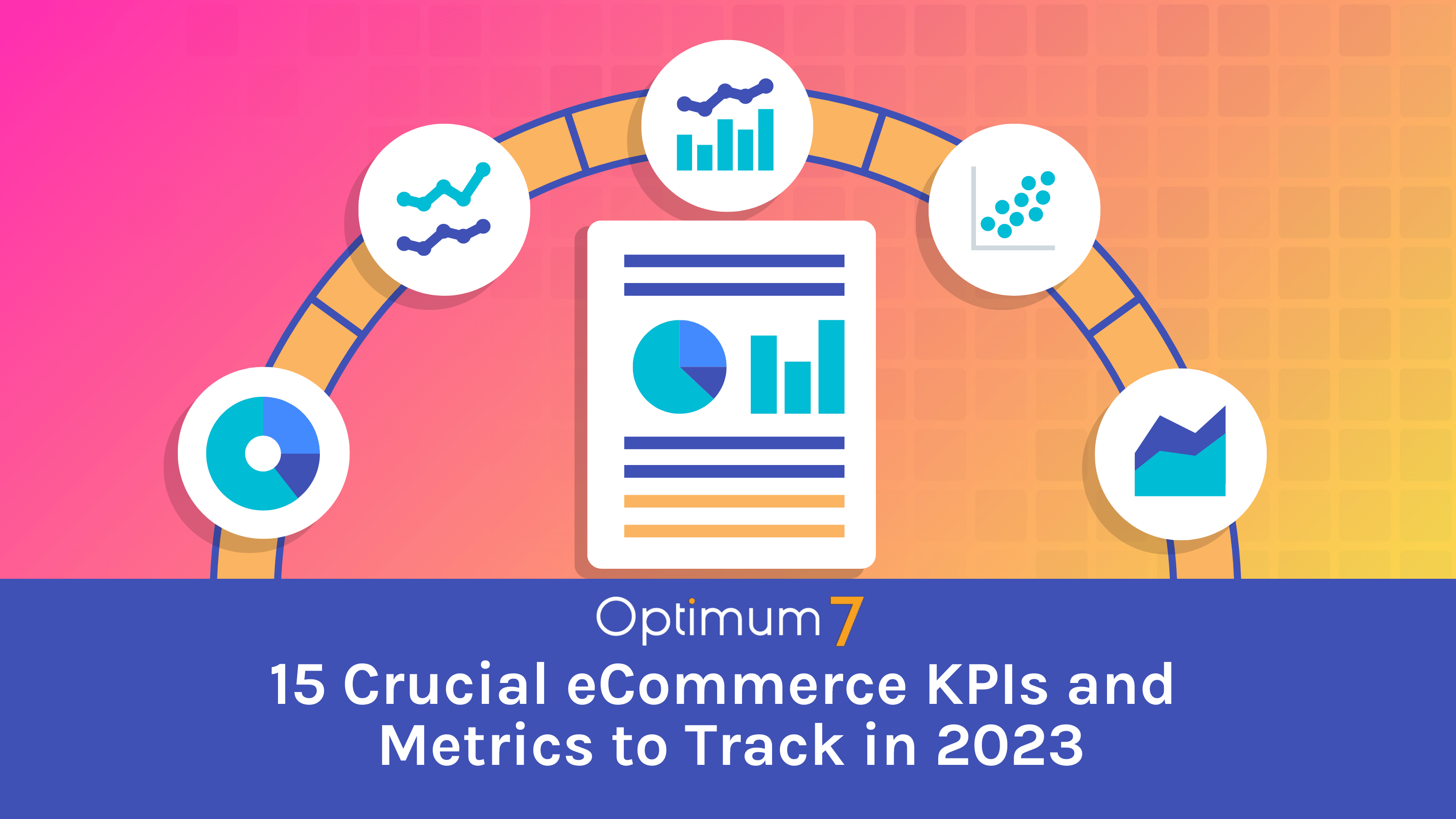As e-commerce continues to grow rapidly, businesses are under increasing pressure to track the right KPIs and metrics to stay competitive.
In 2023, it’s expected that a new wave of e-commerce technologies and innovations will further drive the need for accurate, data-driven decision-making.
In this article, we’ll outline 15 essential e-commerce KPIs and metrics that every business should track to stay ahead of the curve.
Understanding the Importance of KPIs and Metrics in eCommerce
Before we delve into the specific KPIs and metrics, let’s take a moment to explore their importance in e-commerce. Put simply, KPIs and metrics provide businesses with valuable insights into their performance.
By tracking the right KPIs and metrics, you’ll identify areas of strength and weakness, optimize your operations, and make data-driven decisions to achieve your goals.
One of the most significant benefits of KPIs and metrics is their ability to help you understand your customers better. By tracking customer-related metrics, such as customer satisfaction and net promoter score (NPS), you’ll gain insights into your customer’s needs and preferences, empowering you to tailor your marketing and sales efforts accordingly.
The Role of KPIs and Metrics in Business Growth
Business growth is a top priority for any e-commerce business. KPIs and metrics are essential tools for achieving your growth by measuring the success of different initiatives, identifying areas for improvement, and making data-driven decisions to optimize for growth.
By tracking KPIs and metrics, you’re also better equipped to respond to market changes and stay ahead of your competition. For example, you can track metrics, such as conversion rates and customer acquisition costs, to determine the effectiveness of their marketing campaigns.
By analyzing these metrics, you’ll identify which campaigns are generating the most revenue to adjust your marketing strategy accordingly.
Aligning KPIs with Your eCommerce Goals
When deciding on which KPIs and metrics to track, it’s essential to align them with your e-commerce goals. For example, if your goal is to increase revenue, you’ll want to track revenue-related KPIs such as average order value (AOV) and customer lifetime value (CLV).
Alternatively, if your goal is to improve customer engagement, you’ll want to track engagement-related KPIs such as bounce rate and time on site. Another important consideration when choosing KPIs and metrics is the stage of your business.
For example, if you’re a startup, you may want to focus on metrics such as customer acquisition cost (CAC) and lifetime value (LTV) to ensure that you’re acquiring customers efficiently and retaining them over time.
Revenue-Based KPIs and Metrics
Running an e-commerce business can be challenging, especially when it comes to tracking and measuring your revenue performance. However, by focusing on key performance indicators (KPIs) and metrics, you gain valuable insights into your business to make informed decisions and maximize your bottom line.
Here are three important revenue-based KPIs and metrics that every e-commerce business should track:
- Gross Revenue
- Average Order Value (AOV)
- Customer Lifetime Value (CLV)
Gross Revenue
Gross revenue is the total revenue generated by your e-commerce business before accounting for any expenses, including all sales revenue, shipping fees, and taxes. Tracking gross revenue is important because it gives you an overall picture of your revenue performance.
By analyzing your gross revenue over time, you identify trends and patterns in your sales, which can help you make better decisions about your pricing, marketing, and inventory management strategies. For example, if you notice that your gross revenue is decreasing over time, you may need to adjust your pricing strategy or invest more in marketing to attract new customers.
On the other hand, if your gross revenue is increasing, you may want to consider expanding your product offerings or investing in new technology to improve your customer experience.
Average Order Value (AOV)
AOV measures the average order value of your e-commerce store. This is calculated by dividing your total revenue by the number of orders placed.
By tracking your AOV, you better understand your customer behavior and find ways to increase your revenue. One way to increase your AOV is by offering bundled products or creating product recommendations.
For example, if you sell clothing, you could create a bundle deal at a discounted price to encourage customers to purchase more items and increases the overall value of each order. Similarly, by offering personalized product recommendations based on a customer’s browsing and purchase history, you can increase the likelihood of them adding more items to their cart.
Customer Lifetime Value (CLV)
CLV measures the total value a customer brings to your business over their lifetime. This includes all purchases made by the customer, as well as any referrals or recommendations they make to others.
By understanding your CLV, you can better allocate resources to drive customer loyalty and retention. For example, if you know that loyal customers have a higher CLV, you can invest in customer retention tactics such as loyalty programs and personalized discounts.
By offering exclusive rewards and discounts to your most loyal customers, you can incentivize them to continue shopping with you and refer others to your business.
Overall, tracking these revenue-based KPIs and metrics is essential for any e-commerce business looking to improve its bottom line. By analyzing your gross revenue, AOV, and CLV, you gain valuable insights into your business and make data-driven decisions to drive growth and success.
Traffic and Conversion KPIs and Metrics
As a business owner, it’s important to keep track of your website’s traffic and conversion metrics to optimize your marketing efforts and increase revenue. Let’s take a deeper look at some of the key performance indicators (KPIs) you should be monitoring, including:
- Website Traffic
- Traffic Sources
- Conversion Rate (CVR)
- Cart Abandonment Rate
Website Traffic
Website traffic is the lifeblood of any online business. By tracking website traffic, you gather valuable insights into the behavior of your visitors and identify which traffic sources are driving the most traffic to your website.
This information helps you to optimize your marketing efforts to get more traffic from those sources. It’s important to note that not all website traffic is created equal.
Some visitors may have a higher likelihood of converting into customers than others. By analyzing your website traffic, you identify the types of visitors that are most likely to convert and focus your marketing efforts on attracting more of those visitors.
Traffic Sources
Understanding where your website traffic is coming from is crucial for optimizing your marketing efforts. Traffic sources refer to the channels through which visitors reach your website, such as organic search, social media, or email marketing.
By tracking traffic sources, you better understand which channels are driving the most traffic and optimize your marketing efforts accordingly. For example, if you notice that most of your traffic is coming from social media, you may want to invest more time and resources into your social media marketing strategy.
Conversion Rate (CVR)
Conversion rate measures the percentage of visitors to your website who take a desired action, such as making a purchase or filling out a form. By tracking your conversion rate, you identify areas for improvement in your conversion funnel and optimize your website to increase conversions.
There are many factors that can impact your website’s conversion rate, such as the design of your website, the copy on your landing pages, and the ease of your checkout process. By analyzing your conversion rate, you identify areas for improvement and make changes to your website to increase conversions.
Cart Abandonment Rate
The cart abandonment rate measures the percentage of visitors who add items to their cart but leave the website without making a purchase. This is a common problem for many online businesses, but there are steps you can take to reduce cart abandonment.
By tracking the cart abandonment rate, you identify reasons why visitors are abandoning their carts and take steps to reduce cart abandonment, such as offering free shipping or fixing technical issues on your website. You can also use retargeting campaigns to remind visitors of items they left in their cart and encourage them to complete their purchases.
In conclusion, tracking these KPIs and metrics is essential for any online business looking to optimize its marketing efforts and increase revenue. By analyzing your website traffic, traffic sources, conversion rate, and cart abandonment rate, you can identify areas for improvement and make data-driven decisions to grow your business.
Customer Engagement and Retention KPIs and Metrics
Engaging customers and retaining them is essential for the growth of any business. Let’s take a closer look at some of the most important KPIs and metrics for customer engagement and retention, such as:
- Bounce Rate
- Time on Site
- Customer Retention Rate
- Net Promoter Score (NPS)
Bounce Rate
Bounce rate measures the percentage of visitors who leave your website after viewing only one page, without interacting with your website further. A high bounce rate may indicate that your website is not engaging visitors, and can identify areas for improvement to increase engagement.
For instance, you can analyze the content on your landing pages to see if it is relevant and engaging to your target audience. You can also check the loading speed of your website, as slow loading times can lead to visitors leaving your website quickly.
Time on Site
Time on site measures the amount of time visitors spend on your website. By tracking time on site, you better understand how engaging your website is, and identify areas for improvement to increase engagement.
One way to increase time on site is to provide visitors with valuable and relevant content. You can also create interactive elements on your website, such as quizzes or surveys, to keep visitors engaged and interested.
Customer Retention Rate
The customer retention rate measures the percentage of customers who return to your website and make a purchase again. By tracking customer retention rates, you identify areas for improvement in your customer retention tactics and take steps to increase customer loyalty.
To improve customer retention rate, you can offer personalized promotions and discounts to customers based on their purchase history. You can also send personalized emails to customers to remind them of products they have previously purchased or to inform them of new products that may interest them.
Net Promoter Score (NPS)
NPS measures customer satisfaction and loyalty through a simple survey question: “How likely are you to recommend our product/service to a friend or colleague?” By tracking NPS, you can understand how satisfied your customers are, and identify opportunities to improve your product or service.
You can improve your NPS by providing excellent customer service and support. Responding to customer inquiries and complaints in a timely and helpful manner can go a long way in increasing customer satisfaction and loyalty.
By tracking these KPIs and metrics, businesses can gain valuable insights into their customer engagement and retention strategies, and take steps to improve them. Remember, engaged and loyal customers are the key to a successful and thriving business.
Inventory and Fulfillment KPIs and Metrics
As an e-commerce business owner, it’s important to have a clear understanding of your inventory and fulfillment performance.
Here are the inventory and fulfillment KPIs that you should be tracking in 2023:
- Sell-Through Rate
- Stock Turnover
- Order Fulfillment Time
Sell-Through Rate
The sell-through rate measures the percentage of inventory sold within a specified period. This metric is a crucial indicator of how well your products are performing in the market.
By tracking the sell-through rate, you better understand how quickly products are selling and anticipate inventory needs in advance. For example, if your sell-through rate is high, you may need to order more inventory to avoid stockouts.
On the other hand, if your sell-through rate is low, you may need to reevaluate your product offerings or marketing strategy to increase demand.
Stock Turnover
Stock turnover measures the number of times your inventory is sold and replaced within a specified period. This metric is closely related to the sell-through rate and can provide insight into your inventory management strategy.
By tracking stock turnover, you monitor inventory levels and optimize your purchasing strategy to meet inventory demands. For instance, if your stock turnover rate is low, you may need to adjust your ordering frequency or order smaller quantities to reduce excess inventory and free up cash flow.
Order Fulfillment Time
Order fulfillment time measures the amount of time it takes from when an order is placed to when it is delivered to the customer. This metric is critical to customer satisfaction and can impact your business’s reputation and bottom line.
By tracking order fulfillment time, you identify areas for improvement in your fulfillment process and optimize it for greater efficiency. For example, if your order fulfillment time is long, you may need to streamline your order processing or invest in automation technology to speed up the fulfillment process.
Overall, tracking these inventory and fulfillment KPIs and metrics can help you make informed decisions about your business operations and drive growth and profitability.
Implementing and Monitoring Your eCommerce KPIs and Metrics
Running a successful e-commerce business requires a combination of strategy, hard work, and a deep understanding of your customers.
This is our proven process for implementing and monitoring your e-commerce KPIs:
- Choose the right tools for tracking.
- Review and adjust your KPIs and metrics regularly.
- Make data-driven decisions for e-commerce success.
Choosing the right tools for tracking
Choosing the right tools for tracking your KPIs and metrics is critical to success. There are a range of tools available, from simple spreadsheets to complex analytics software.
It’s essential to choose a tool that aligns with your e-commerce goals and provides you with the necessary insights to make data-driven decisions. For instance, if you are just starting with e-commerce, a simple spreadsheet may suffice.
However, as your business grows, you might want to consider more advanced analytics tools that provide real-time data and insights.
Regularly reviewing and adjusting your KPIs and metrics
As your e-commerce business evolves, it’s essential to regularly review and adjust your KPIs and metrics to ensure that they remain aligned with your goals. This might involve adding new KPIs or metrics, removing ones that are no longer relevant, or adjusting the weight you give to different metrics based on changing circumstances.
For example, if you notice that your website traffic is increasing, but your conversion rate remains low, you might want to adjust your KPIs to focus on improving your conversion rate. By doing so, you identify areas that need improvement and take action to optimize your e-commerce operations.
Making data-driven decisions for eCommerce success
Ultimately, the key to e-commerce success lies in making data-driven decisions based on the insights you gain from tracking the right KPIs and metrics. By analyzing your data and testing different strategies, you can optimize your e-commerce operations, respond to market changes quickly, and achieve your growth goals in 2023 and beyond.
For instance, if you notice that a particular product category is selling well, you might want to consider expanding your product range in that category. Alternatively, if you notice that your customers are abandoning their carts, you might want to optimize your checkout process to reduce friction and improve the overall customer experience.
In conclusion, tracking and analyzing the right KPIs and metrics is essential for e-commerce success. By choosing the right tools, regularly reviewing and adjusting your KPIs, and making data-driven decisions, you can optimize your e-commerce operations and achieve your growth goals in the years to come.




